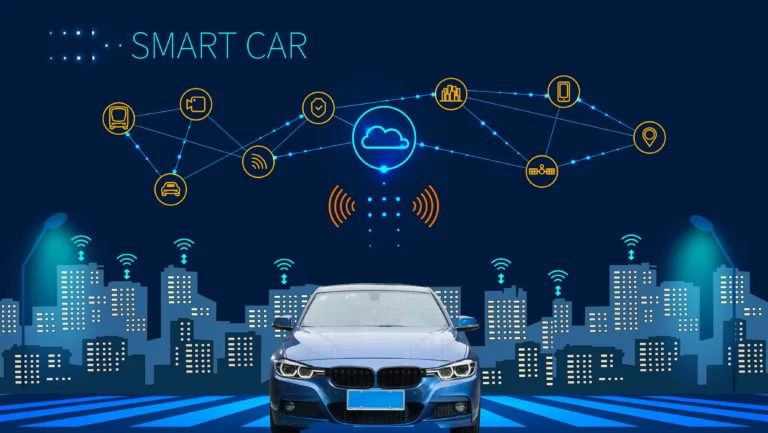
Vehicle-to-Grid (V2G): The Future of EV Charging and a Smarter Energy Grid
Vehicle-to-Grid technology is redefining the role of electric vehicles, turning them into dynamic energy assets that benefit drivers, utilities, and the planet.

There is a Chinese idiom that says, “The golden jade is outside, but the wool is inside”, which means that the outside is very beautiful but the inside is a mess. People inherently have a difference between the inside and outside, so does an electric vehicle. If the internal parts are not well maintained, the value and safety of the vehicle will be greatly reduced.
The most important difference between an electric vehicle, which is powered by electricity, and a fuel car is that it does not require regular oil changes. So what are the main maintenance items?
It is actually the battery, motor, and electrical system. The rest of the parts like air conditioning filter replacement, brake pads, fluid repair, chassis repair, windshield wipers, tires, etc. are similar to traditional fuel cars in terms of replacement and maintenance.
As mentioned earlier, there are many items regarding the maintenance of electric vehicles, but here we will discuss the most significant ones.
The battery is the core component and power source of the electric vehicle, if it has problems, the naked eye can only see scratches, ruptures and other cosmetic problems, can not go deep into the internal problems. This requires us to go to a garage regularly, where automobile mechanic use professional tools and technology to conduct a comprehensive inspection and repair of the motor and the entire electric system.
At the same time, the battery storage needs to be ventilated, avoid open flames, moisture, resist exposure to the sun, and timely replenishment of power to extend the life of the battery.

The difference between electric cars and fuel cars is that most of their motors are distributed on the chassis, and the normal operation of electric cars depends on the chassis. In order to prevent the chassis of the protective layer is destroyed and wiring aging problems, the same need to go to the local garage regularly for regular inspection and repair, to check the safety risks.
Battery charging and discharging, as well as the motor and other components work to generate heat, need coolant for cooling. Regular coolant replacement can effectively ensure battery performance. To avoid the occurrence of short circuit, the coolant does not use electrolyte body, but waterless coolant. Waterless coolant also has the advantages of corrosion resistance, increased power and fast acceleration.
After the purchase of the car, the owner will receive the relevant maintenance cycle manual, telling the owner when to maintain the vehicle and how to maintain. The shortest first maintenance has 1 month or 3,000 km, the longest also has 1 year or driving 10,000 km before the need. However, the maintenance intervals need to be extended or shortened according to the specific use of the electric vehicle.
The following is what we need to know about electric car maintenance methods, of course there are many more methods, look forward to sharing more.

When the electric car is started, it should be evenly accelerated. When starting or going uphill, it is necessary to avoid sudden acceleration, which will form high current discharge and lead sulfate crystals that will lead to electrode crystallization, thus destroying the physical properties of the battery plate and reducing the service life of the battery plate.
Loss of power means that the power is insufficient and the battery is not charged in time after use. This can easily lead to battery sulfation, blocking the ion channels, resulting in undercharging and a decrease in battery capacity.
Even if the electric car is idle, it should be charged once a month, and also avoid using up the power at once, at least 20% remaining, to keep the battery in a healthy state.
Battery charging temperature is generally in the 0-45℃, the storage temperature is the best 25℃. Avoid sunlight exposure, high temperature environment to increase the internal pressure of the battery, resulting in battery water loss, battery activity decreases, accelerating the aging of the pole plate.
In terms of charging time, the average charging time of the battery is generally around 10 hours. Joint Tech EV home charging chargers, you can manage the charging activities by remote start or shut down charging, set the charging duration, adjust the charging output current, etc. through APP to properly control the charging time of the car to avoid power loss driving, overcharging and undercharging.

Due to climate, man-made and road conditions, the tires of electric vehicles need to be checked regularly, otherwise unstable tire pressure will increase electricity consumption, reduce range and tire life, thus endangering safety as well.
In addition, check whether the wiper is aging, whether the wheel axle is lubricated and scrubbed, whether the brake pad is replaced, and other electric car parts, large and small, need to be carefully checked regularly.
At present, many countries are also formulating relevant policies, most of which indicate that in the next 20-30 years, the fuel car market will be withdrawn, when new energy vehicles will usher in the peak period. We often say that details determine success or failure, and we should pay attention to the maintenance of electric vehicles.

Vehicle-to-Grid technology is redefining the role of electric vehicles, turning them into dynamic energy assets that benefit drivers, utilities, and the planet.

At this ACT Expo, Joint Tech will unveil its latest advanced commercial Level 2 charging solution, designed to enhance the user experience. Meanwhile,powered by new technology, our commercial chargers effectively address multiple challenges encountered in real-world applications.

The new tariffs imposed by the United States have once again caused global economic tension.In order to respond to the impact on the global supply chain, Joint new factory in Malaysia offers favorable tax rates.